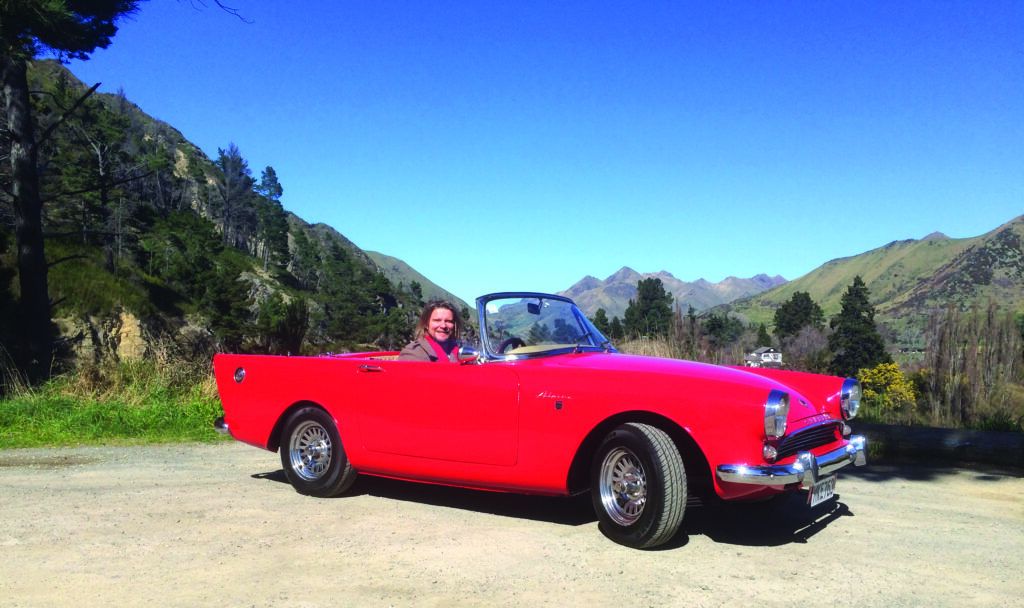
1959 Sunbeam Alpine: A road trip with Lady P
The romance of the road
The South Island begins to reveal its unbelievable beauty and clarity of light as we weave and bend past mountain peaks, blue flowing rivers, and bright green forests. Today, while the cutlery wheel continues to chime, there are no morbid rattles, and we are still alive. The road moves beneath us and I start to really understand what a road trip is all about: the warm analogue hum of the engine, the sensory overload of wind and sun, the dreamy pageant of shapes and colour that glides by like a movie set, not a cloud in the sky.














